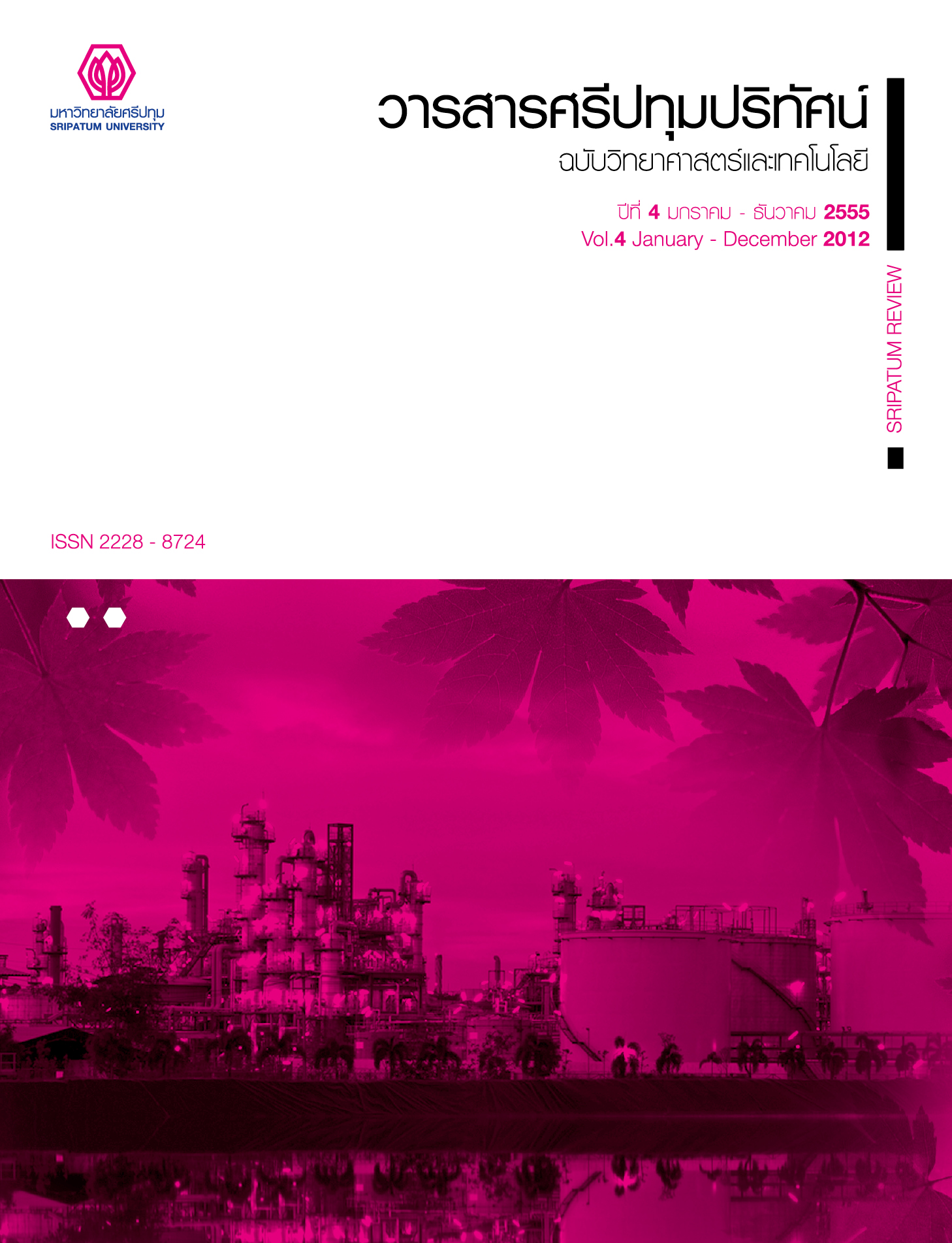MULTIPLE ITEMS ECONOMIC PRODUCTION QUANTITY WITH RAW MATERIALS AND COMPONENTS INVENTORY MANAGEMENT CONSIDERATION
Main Article Content
Abstract
Although the Multiple Items Economic Production Quantities model (Multi-EPQ) is extensively used in the determination of optimal production lot size of each item in the continuous demand system, this technique does not consider those costs associated with the inventory management of raw materials and components consumed in the production. The purpose of this research is to determine the optimal production lot size of each product in order to minimize the total cost of system including ordering costs, set up costs, and holding costs of raw materials and finished products. For solving the problem, the mathematical model of system total cost is developed and derived in order to determine the optimal number of production cycle per year which can lead to the determination of optimal production lot size of each product. From the study result, considering the objective of minimizing the system total cost, the proposed model yields better solution than the traditional Multi-EPQ model.
Article Details
References
Pentico, D.W., Drake, M.J. and Toews, C. 2009. The deterministic EPQ with partial backordering: A new approach. Omega, 37: 624-636.
Zhang, R.Q. 2009. A note on the deterministic EPQ with partial backordering. Omega, 37: 1036-1038.
Pentico, D.W., Drake, M.J. and Toews, C. 2011. The EPQ with partial backordering and phase-dependent backordering rate. Omega, 39: 574-577.
Hsieh, T.P. and Dye, C.Y. 2012. A note on “The EPQ with partial backordering and phase-dependent backordering rate”. Omega, 40: 131-133.
Drake, M.J., Pentico, D.W. and Toews, C. 2011. Using the EPQ for coordinated planning of a product with partial backordering and its components. Mathematical and Computer Modelling, 53: 359-375.
Salameh, M.K. and Jaber, M.Y. 2000. Economic production quantity model for items with imperfect quality. Int. J. Production Economics, 64: 59-64.
Hou, K.L. 2007. An EPQ model with setup cost and process quality as functions of capital expenditure. Applied Mathematical Modelling, 31: 10-17.
Chiu, S.W. 2008. Production lot size problem with failure in repair and backlogging derived without derivatives. European Journal of Operational Research, 188: 610-615.
Taleizadeh, A.A., Niaki, S.T.A. and Najafi, A.A. 2010. Multiproduct single-machine production system with stochastic scrapped production rate, partial backordering and service level constraint. Journal of Computational and Applied Mathematics, 233: 1834-1849.
Taleizadeh, A.A., Wee, H.M. and Sadjadi, S.J. 2010. Multi-product production quantity model with repair failure and partial backordering. Computers & Industrial Engineering, 59: 45-54.
Pasandideh, S.H.R. and Niaki, S.T.A. 2008. A genetic algorithm approach to optimize a multi-products EPQ model with discrete delivery orders and constrained space. Applied Mathematics and Computation, 195: 506-514.

